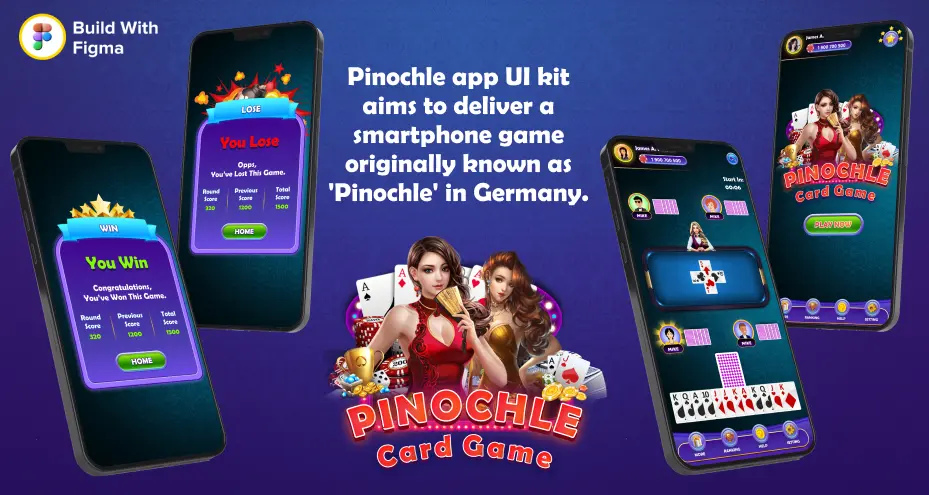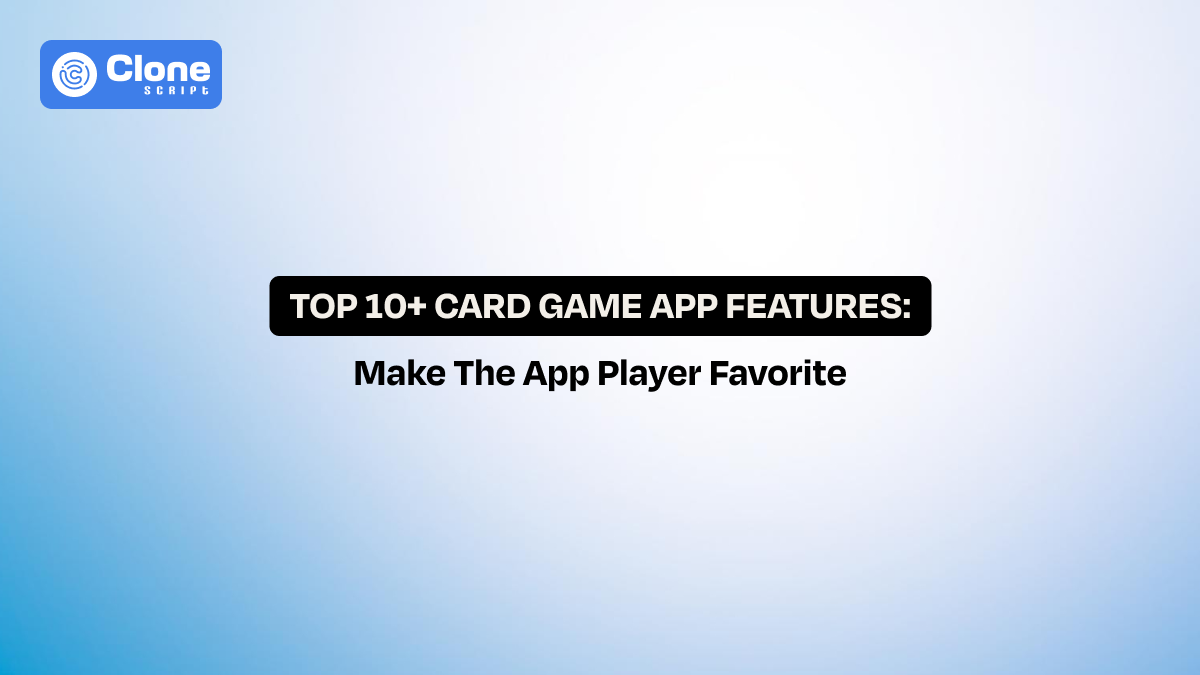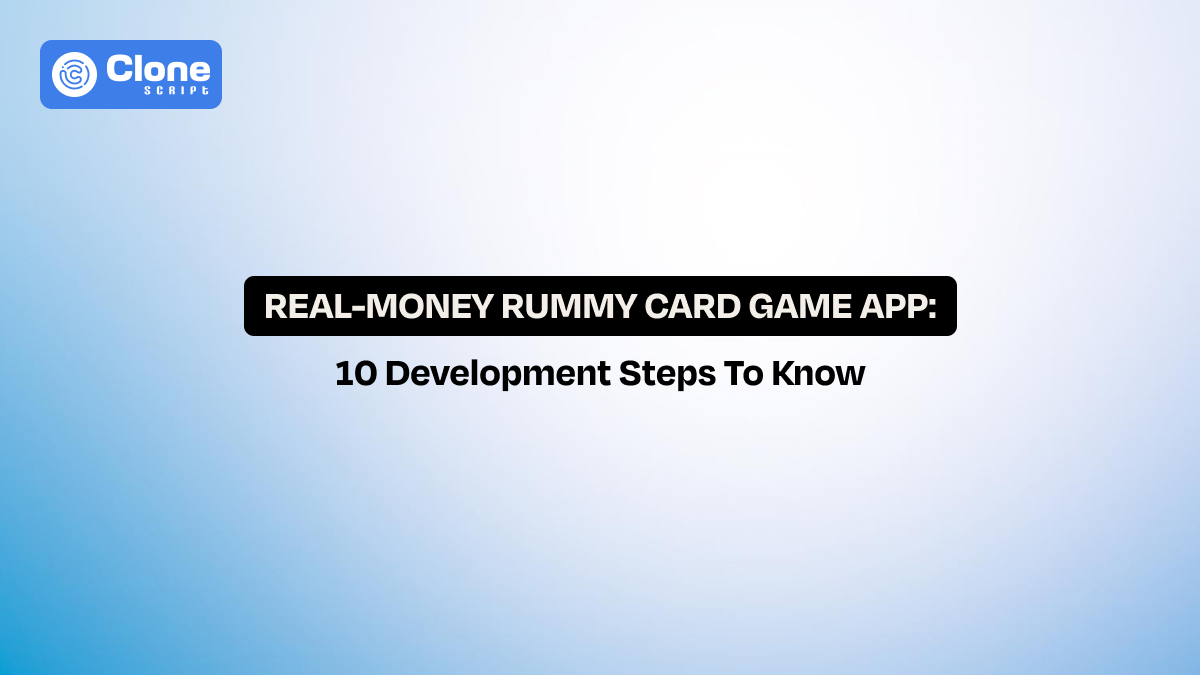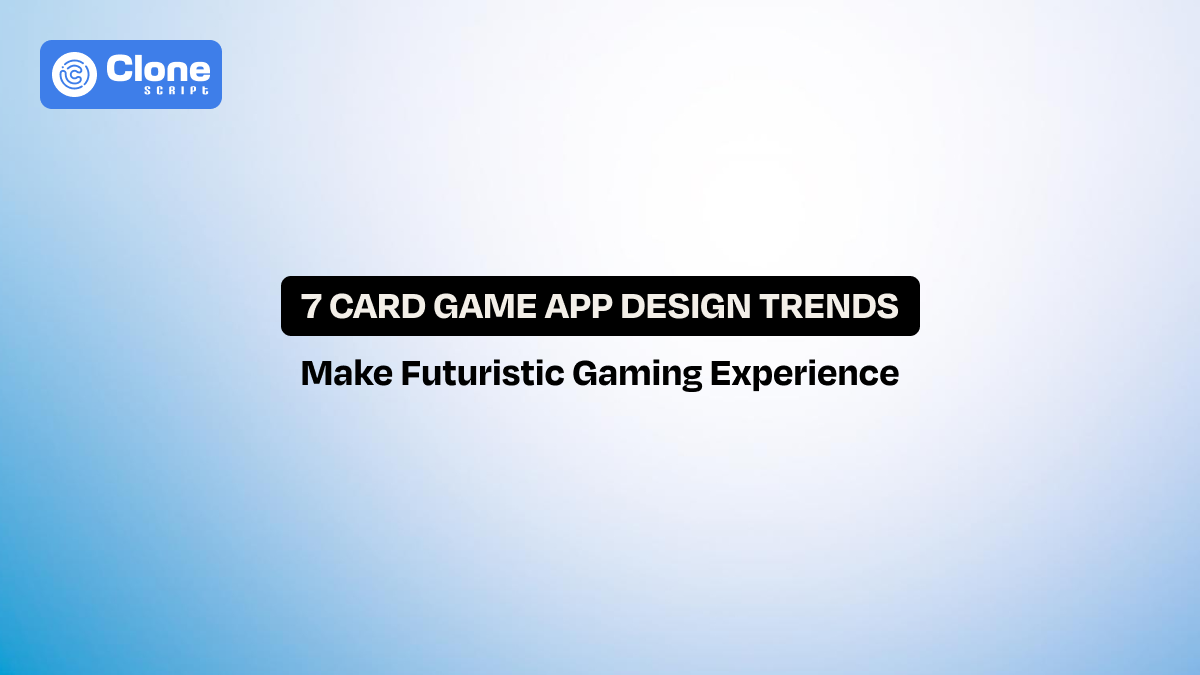Top 10+ Features to Make Your Card Game App a Player Favorite
Think about the last time you opened UNO!, Hearthstone, or PokerStars. What made you stay? Is it just the rules? No, it was the feeling. The way the cards slid across the screen, the friendly pop of a match found, or that small dopamine hit when you leveled up make you happy.
That’s the invisible mechanism behind the trends of great card game app design. It is a combination of UX intuition, aesthetic rhythm, and product-led engagement.
Designers today consider interactive design, behavioral psychology, and monetization strategy in the best mobile card games. They optimize every single element is provide a joy without frustration, and sophistication without clutter.
In this guide, we’ll understand the 12 must-have features of a card game app, backed by modern UX principles, design systems, and industry examples. Whether you’re a UI designer or a product strategist, this is your roadmap to building card games that entertain and retain players.
Why User-Friendly Features Define Successful Card Game Apps?
In card game app development, user experience is no longer an add-on. It’s the foundation of retention. Data.ai’s 2024 Gaming Insights Report found that apps with optimized onboarding and responsive UI achieved 38% higher day-7 retention than those without.
This proves that UX directly drives monetization and virality. Players share what feels smooth, not what’s merely functional.
For designers and developers, the key challenge is balancing playability and simplicity. Every design choice from typography to haptic feedback affects perception and emotion.
Three UX principles guide successful card game design:
-
Accessibility: Everyone can play, regardless of age or familiarity. However, responsible gaming is necessary to be introduced when monetary contests exist.
-
Cognitive flow: Interface elements feel predictable and trustworthy. From seeing the first screen to entering the game mode, everything should be in perfect flow.
-
Engagement layering: Gradual complexity keeps experts challenged and beginners confident. So, the card game app should be designed accordingly to different types of players’ needs.
Ultimately, features in the gaming app don’t win players — experiences do.
12 Features Every Card Game App Should Have
Creating a feature-rich card game app is beyond just adding complexity. It’s about balancing usability, performance, and emotional engagement. Each design decision should serve a purpose: improving retention, monetization, or player satisfaction.
Below are 12 deeply analyzed features that define modern mobile card games — with insights for both UX/UI and product designers.
1. Intuitive and Engaging UI Design
A great card game app UI isn’t just about looking pretty—it’s about feeling right. Players should instinctively know where to tap, what matters, and how the game reacts, all without thinking twice. Every flick of a card, glow of a button, or animation should communicate intent and guide emotions.
A well-crafted interface transforms rules and strategy into a tactile, visual rhythm that keeps players engaged, excited, and focused. So, the game feels effortless while subtly rewarding every interaction.
What to focus on:
-
Reveal features progressively—don’t overwhelm with everything at once.
-
Gesture-based shortcuts, like long-press to peek or double-tap to sort, make interactions playful.
-
Let motion tell the story: a card flick or glow signals “your turn” more clearly than words.
-
Adaptive layouts keep buttons, decks, and scoreboards readable across phones and tablets.
-
Prioritize visual focus: cards first, then player turns, then opponent info.
-
Color cues evoke mood—red for urgency, blue for calm.
Ultimately, your app interface design should guide emotion, not attention. Great UI in a card game app keeps the player immersed, not distracted.
2. Multiplayer Functionality That Feels Effortless
Multiplayer is where the magic of a card game truly comes alive. To spark friendly rivalries, surprises, and shared excitement, this feature is required. Players should feel the pulse of competition and camaraderie, whether they’re live in real-time or catching up asynchronously.
Presence indicators, reactions, and smart matchmaking create a living, breathing world where every move matters. When done right, multiplayer feels like a natural extension of the social thrill found around a real card table.
What to focus on:
-
Offer both real-time and asynchronous matches for flexibility.
-
Match players fairly with skill-based matchmaking and latency balancing.
-
Show online, idle, or in-game presence to create a sense of connection.
-
Add light social cues—emotes, post-game summaries, or “rematch?” prompts.
-
Build playful rivalry loops that reward engagement.
-
Track smooth flow via metrics like Time Between Matches (TBM).
-
Make every multiplayer interaction feel lively, fair, and emotionally satisfying.
3. Practice Games and Contextual Tutorials
No one wants to slog through a rulebook. Players want to learn by doing. The best card games teach naturally, slipping lessons into moments of play. Each win, loss, or clever move becomes a mini-teaching moment.
Contextual tutorials let players explore, experiment, and internalize mechanics without feeling bored or pressured.
Guiding with gameplay, you turn onboarding into a fun, emotionally engaging experience. From there, players feel confident and capable from their very first hand.
What to focus on:
-
Use scenario-based tutorials that teach one concept at a time.
-
Let players skip or replay sections, giving them control over learning.
-
Track tutorial engagement to identify sticking points or drop-offs.
-
Introduce “guided autonomy,” encouraging exploration while offering support.
-
Make learning playful—embed victories and failures into teaching moments.
-
Adapt tutorial flow for new vs. returning players.
-
Use visual and emotional cues to reinforce understanding naturally.
4. Player Progression and Reward Systems
A game without progression feels flat. Players need to feel a sense of growth, mastery, and achievement. For that, reward systems are very helpful. Offering daily bonuses to rare collectibles—turn each session into a meaningful journey.
When designed thoughtfully, progression hooks both short-term dopamine and long-term engagement. This gives players reasons to return and invest in their evolving identity. It is considered a future of card game design.
Seasonal leaderboards, milestones, and personalization add emotional resonance, transforming gameplay from mere action into a narrative of skill, status, and accomplishment. This ultimately results in players coming back.
What to focus on:
-
Show players their next reward to build anticipation.
-
Use time-gated bonuses to create habitual engagement loops.
-
Offer non-monetary rewards—avatars, skins, card backs—for personalization.
-
Include seasonal leaderboards to re-engage inactive users.
-
Apply the Hooked Model: Trigger → Action → Reward → Investment.
-
Design progression for casual, competitive, and completionist players.
-
Celebrate milestones visually and emotionally to reinforce satisfaction.
5. Seamless and Smooth Gameplay
Nothing kills a card game app experience faster than lag, skipped frames, or stuttery animations.
Smooth gameplay is more than technical polish, and it’s emotional continuity. Players should feel the rhythm of the game, anticipating moves and reacting naturally.
Implementing subtle visual cues, consistent motion, and responsive controls gives every action weight and predictability. When animations, feedback, and timing flow effortlessly, the experience feels alive, satisfying, and professional. From there, players absorbed and reduced frustration that could make them abandon the app prematurely.
What to focus on:
-
Use anticipatory animation curves for natural card motion.
-
Display “thinking” visuals during latency instead of freezing screens.
-
Preload assets to avoid stutters during gameplay.
-
Maintain consistent timing for flips, draws, and animations.
-
Prioritize touch responsiveness for all gestures.
-
Motion pacing creates subconscious rhythm and immersion.
-
Smooth gameplay directly increases retention, session length, and emotional satisfaction.
6. In-App Chat and Social Sharing
Card games are inherently social, and a digital version should improve connection, rivalry, and celebration. In-app chat, emojis, and reactions transform gameplay into shared moments, letting players tease, celebrate, or strategize together.
Post-game highlights and shareable stats encourage friendly competition and virality. By encouraging community contribution, social features make the app feel alive. This can turn simple matches into memorable interactions that players want to repeat.
What to focus on:
-
Include proximity-based matchmaking and friend invites.
-
Add shared emoji packs for in-game expression.
-
Enable post-game share cards with stats and highlights.
-
Voice snippets or audio emotes enrich emotional interaction.
-
Reward social engagement to increase retention.
-
Balance visibility with moderation to prevent clutter or negativity.
-
Socially active players spend more, stay longer, and create organic community growth.
7. Multi-Language and Localization Support
A global audience expects a card game that speaks their language—literally and culturally. Integrating multilingual support into the app makes it accessible across the globe.
Localization goes beyond translation, adapting gestures, icons, text, and events to regional norms. Additionally, color choices, terminology, and cultural references can influence engagement. From there, players feel more connected when the interface, prompts, and events resonate with their context.
By thoughtfully designing for local audiences, you create a game that feels native anywhere, enhancing accessibility, enjoyment, and retention.
What to focus on:
-
Adapt text and terminology for local comprehension.
-
Consider gestures, hand symbols, and cultural icons.
-
Adjust color symbolism to match regional expectations.
-
Introduce region-specific events or festivals.
-
Test UX writing for clarity and cultural nuance.
-
Localized interfaces can boost engagement and retention.
-
Maintain consistency in gameplay mechanics while tailoring emotional context.
8. Cross-Platform Consistency
Players expect a card game to feel familiar, whether on phone, tablet, or desktop. Cross-platform consistency is a combination of professional visuals and emotional connection.
Gestures, feedback, and controls should map intuitively across devices, giving a seamless experience. A game's progress should carry over via cloud sync, and adaptive layouts should maintain readability and usability.
By maintaining continuity, players feel in control and confident, whether they switch screens mid-session or play in different environments. This sounds like your game feels polished, reliable, and professional.
What to focus on:
-
Map gestures consistently across devices.
-
Sync progress using cloud saves (Game Center, Google Play, or custom servers).
-
Ensure adaptive layouts scale buttons, decks, and UI elements fluidly.
-
Simulate haptic feedback with animations on non-mobile platforms.
-
Maintain visual hierarchy and focus across all screens.
-
Test UI for readability and touch responsiveness.
-
Cross-platform continuity builds trust, immersion, and long-term retention.
9. Secure Payment and Ethical Monetization
Monetization in a card game is revenue is a one thing but along with it’s about trust. Players want to feel confident that purchases are secure, fair, and rewarding. Thoughtful design turns transactions into part of the game experience rather than a jarring interruption.
Ethical monetization encourages players to invest without feeling pressured. This improves long-term loyalty. When done right, payment flows feel intuitive, transparent, and satisfying. It makes spending feel like a natural extension of progression rather than a transactional chore.
What to focus on:
-
Implement soft confirmations to prevent accidental purchases.
-
Show interactive previews of purchased cards or packs.
-
Maintain a clear, transparent purchase history.
-
Use localized payment gateway integration for global audiences.
-
Design purchases to feel like a reward, not a transaction.
-
Integrate optional premium and cosmetic items for personalization.
-
Ethical monetization creates trust, boosts retention, and encourages voluntary spending.
10. Smart Notifications and Retention Design
Notifications are micro-conversations with your players, and they should feel personal, timely, and meaningful. The goal is to draw players back without annoying them. Well-designed app notifications celebrate achievements, remind players of progress, or highlight special events, keeping engagement high.
Personalized, context-aware alerts can feel like friendly nudges rather than interruptions, strengthening emotional bonds with the game. When done well, notifications enhance retention, improve session frequency, and create subtle excitement around returning to the card game app.
What to focus on:
-
Segment messages based on player behavior (competitive vs. casual).
-
Use reinforcement messaging highlighting streaks or rewards.
-
Test tone—casual vs. formal—to maximize engagement.
-
Include in-app inboxes for event summaries to reduce push fatigue.
-
Time notifications strategically for optimal return rates.
-
Personalization increases CTR and retention.
-
Smart notifications create emotional hooks, encouraging recurring play.
11. Offline Mode and Low Data Usage
Connectivity shouldn’t dictate fun. Players should be able to enjoy their card game even when offline or on slow networks. Offline-first design preserves progress, allows practice against AI, and makes sure tutorials remain accessible.
For that, the data has to be handled efficiently, and the game feels reliable and considerate of players’ environments. Low-data modes and lightweight assets expand reach, particularly in emerging markets. From here, making the app more inclusive is easy. This approach strengthens trust and keeps players engaged regardless of their connection quality.
What to focus on:
-
Enable session persistence to resume play after reconnecting.
-
Cache AI opponents and tutorial content locally.
-
Use lightweight visual assets for low-spec devices.
-
Batch sync progress in the background to reduce data usage.
-
Preserve tutorial and practice flow even offline.
-
Offline mode increases engagement in emerging markets.
-
Consider offline-first as a core UX strategy for resilience and accessibility.
12. Regular Updates and Community-Centered Development
The best card games evolve alongside their communities. Players want to feel heard and see their feedback reflected in the game as much as possible. Regular updates, balance patches, and transparent changelogs build trust, while modular content like custom decks or skins helps players to co-create experiences.
To improve engagement, a good way is to organize community-driven events and tournaments in the app. This gives players a stake in the game’s world and makes them emotionally invested. Engaging with players in this way keeps the app fresh, exciting, and socially alive.
What to focus on:
-
Conduct remote UX playtests to gather real feedback.
-
Publish detailed changelogs explaining design decisions.
-
Encourage user-generated content like custom decks and skins.
-
Host design-driven tournaments rewarding creativity, not just skill.
-
Respond to community suggestions visibly to build trust.
-
Update content regularly to maintain excitement.
-
Community engagement strengthens loyalty, retention, and emotional investment.
How to Design a Feature-Rich Card Game App?
Designing a successful card game app requires a thoughtful, step-by-step approach.
Step 1: Define the Core Gameplay Loop: Identify the actions players will repeat most often and ensure they are engaging, intuitive, and emotionally rewarding. This loop forms the foundation of the game.
Step 2: Layer Features Gradually: Introduce multiplayer modes, progression systems, practice tutorials, and social sharing without overwhelming players. Use progressive disclosure to reveal complexity as users advance.
Step 3: Prioritize UX and Visual Feedback: Smooth animations, tactile interactions, and clear visual cues guide players naturally. Responsive layouts across devices ensure accessibility and immersion.
Step 4: Test and Refine: Gather analytics and conduct user testing to identify friction points, adjust difficulty, and optimize feature placement.
Step 5: Engage the Community: Include seasonal events, updates, and feedback loops to keep players invested. Thoughtful orchestration of features transforms a good app into a player-favorite experience.
You can also use a pre-built app UI kit made in Figma. Here’s the useful card game app design to prefer:

Conclusion
Creating a feature-rich card game app is about more than visuals or mechanics—it’s about crafting an experience where gameplay, engagement, and emotion flow seamlessly. From intuitive UI and multiplayer functionality to progression systems, every element plays a role in retention and player satisfaction.
Designers who balance usability, creativity, and emotional resonance can build games that not only capture attention but also maintain long-term loyalty, engagement, and growth in a competitive market.
FAQs
-
How do I choose the right tech stack for a card game app?
Select platforms (iOS, Android, web) and frameworks (Unity, React Native, Flutter) based on performance, multiplayer support, cross-platform needs, and integration with backend development services.
-
What’s the best approach for testing a card game app?
Use iterative testing with alpha/beta testers, playtests, and QA automation to check gameplay, UI/UX, performance, and multiplayer stability before launch.
-
Should I launch with a minimum viable product (MVP)?
Yes. Start with core gameplay and key features to gather real user feedback before adding advanced functionalities or monetization systems.
-
How can I monitor player behavior post-launch?
Integrate analytics to track session length, retention, engagement loops, feature usage, and monetization patterns to guide future updates.
-
Why is cross-platform consistency important?
It helps players enjoy a seamless experience across devices, maintaining emotional and visual continuity while preserving progress and immersion.
-
How important is multiplayer in card game apps?
Multiplayer mode in card games increases competition, social connection, and replayability. This is crucial for retention and long-term player engagement.
-
What makes a card game app engaging for players?
Smooth gameplay, intuitive controls, social interaction, visual feedback, and meaningful rewards enhance engagement and emotional investment.
 BTC - Bitcoin
BTC - Bitcoin
 USDTERC20 - USDT ERC20
USDTERC20 - USDT ERC20
 ETH - Ethereum
ETH - Ethereum
 BNB - Binance
BNB - Binance
 BCH - Bitcoin Cash
BCH - Bitcoin Cash
 DOGE - Dogecoin
DOGE - Dogecoin
 TRX - TRON
TRX - TRON
 USDTTRC20 - USD TRC20
USDTTRC20 - USD TRC20
 LTC - LiteCoin
LTC - LiteCoin







